Why do cats bite?
3rd September, 2020
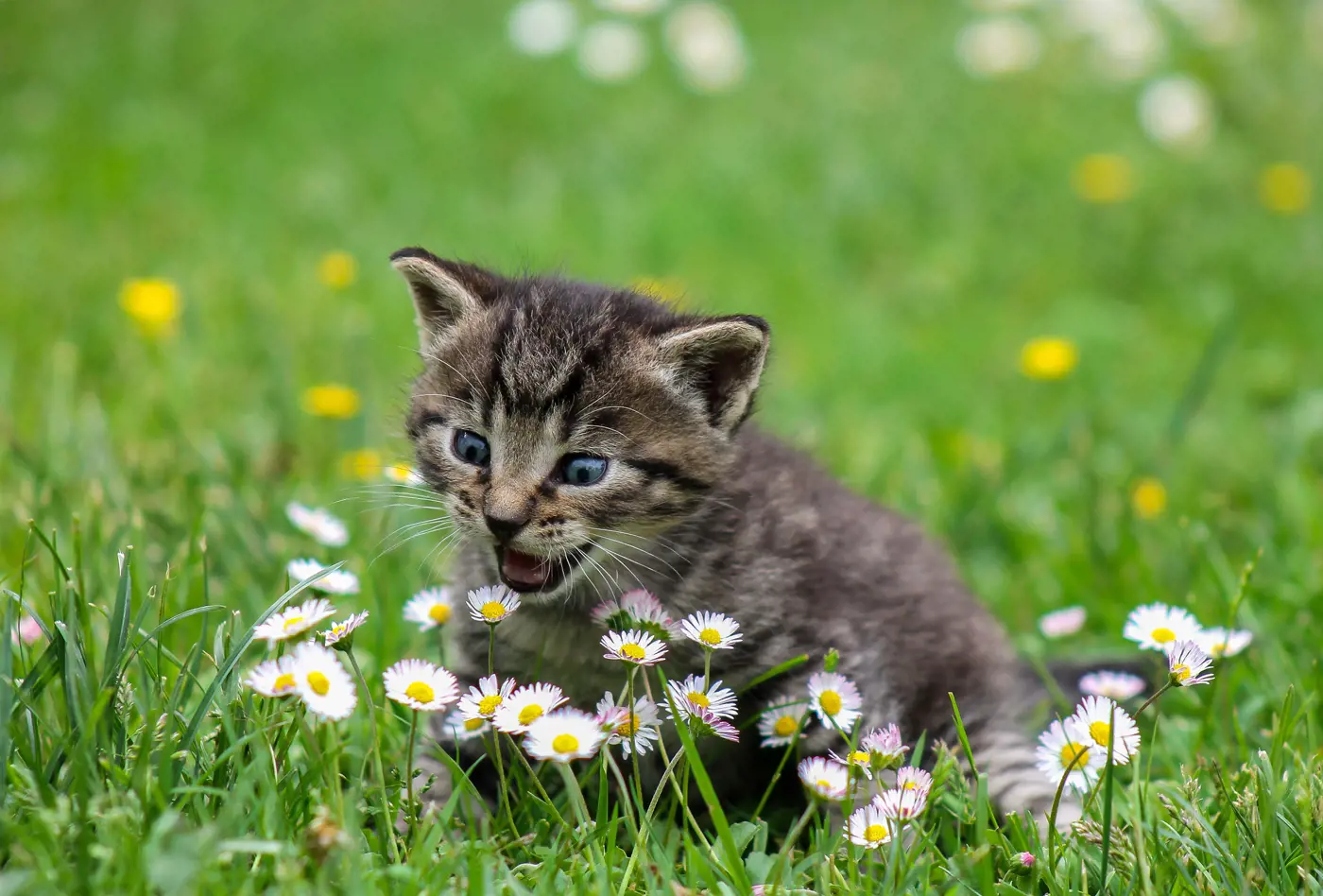
Whether you’re a first-time cat owner or have a long-term feline friend, there’ll be times when your cat’s behaviour will confuse and even hurt you. Cat biting is one of the more common complaints amongst owners which can leave them flummoxed.
You do so much for them, from arranging the perfect feline insurance to buying their favourite food and giving them all the attention they demand, and then they bite! You may ask yourself, ‘what did I do wrong?’.
It’s important to remember that while it’s not pleasant, if your cat bites you, you’re definitely not alone. And it certainly isn’t because they don’t love you.
There are many reasons for a cat biting and often it seems entirely out of the blue. As we know, cats are natural born killers so biting, pouncing and clawing are often a big part of their normal playful behaviour.
But how can we differentiate between normal play and more troubling aggression. Read our guide to discover why our furry companions sometimes bite and how to stop it from getting out of hand.
Why do cats bite?
There are many ways your cat will try to communicate with you and unfortunately, biting is one of them.
The trick is to figure out what they’re trying to say, particularly when the bite seems to be unprovoked.
You’ll be happily rubbing their forehead when suddenly you’ll find teeth and claws embedded in your arm!
The majority of times this is simply to tell you they’re no longer enjoying the attention and want you to stop.
While a little warning would be nice, there’s often just a fine line between enjoyment and irritation for cats. They’ll probably think they gave you plenty of chances to change your ways!
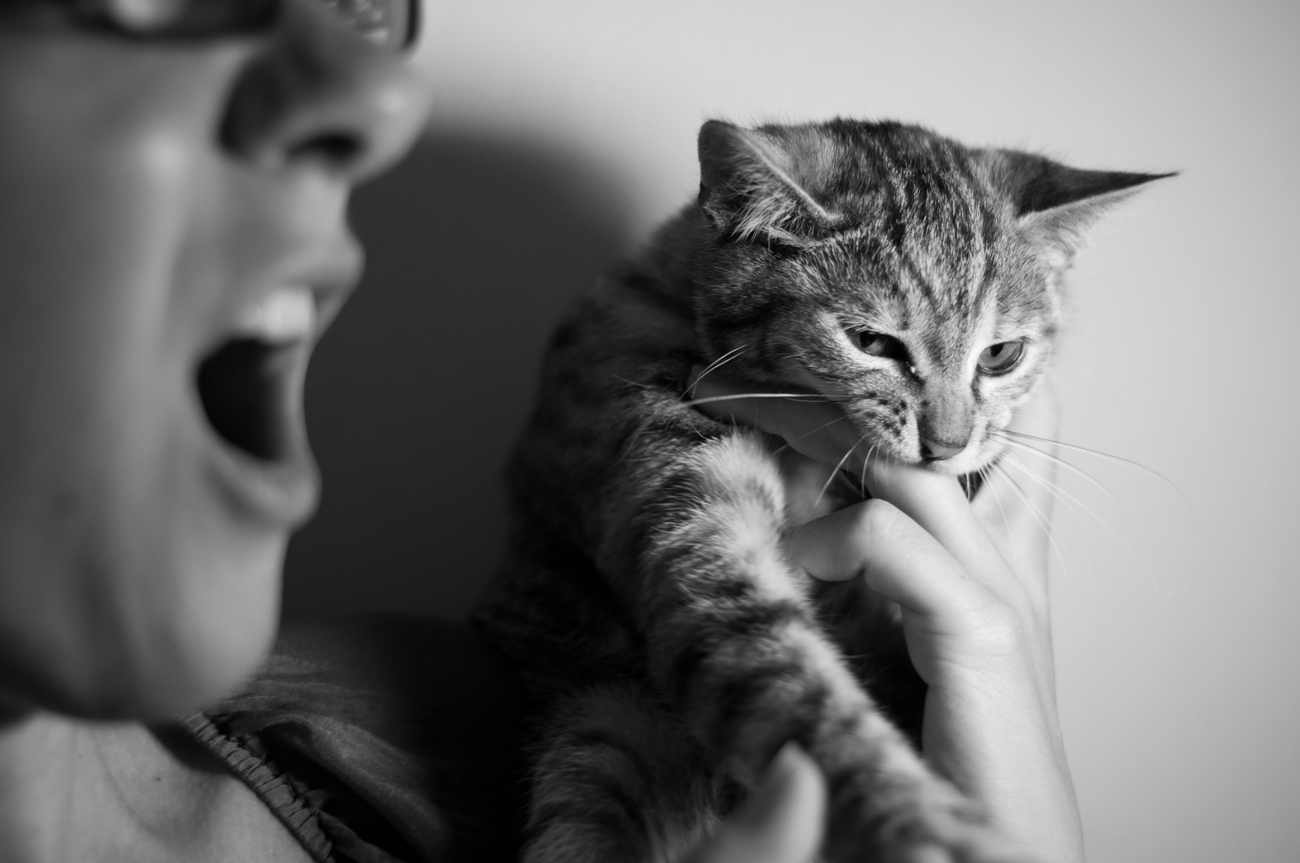
Learn to read your cat’s body language
Just as with humans, cats are individuals who have varying needs when it comes to physical contact.
Some love cuddles and kisses while others just require a short stroke on the top of the head. Knowing the level of attention your cat enjoys will prevent painful miscommunication.
But how can you tell when your previously adoring kitty will turn? Watching your cat’s body language is a good way to learn when a change in behaviour might be on its way.
Noticing the signs of when your cat has had enough will lower the chance they’ll bite. You’ll soon realise when to back off and let them do their own thing.
With careful observation of your cat’s communication signals, you’ll usually see warning signs, such as:
-
Quickly turning their head towards your hand
-
Twitching or flipping their tail
-
Flattening their ears or rotating them forward and back
-
Restlessness
-
Dilating pupils
Play time practice
As mentioned earlier, a cat’s play revolves around the hunting instinct.
They’ve been programmed over millennia to stalk and pounce and to bite and claw. But without a helpful rodent victim to practise on, the next best thing is probably going to be your hands or feet.
Fortunately, these playful nips and scratches won’t usually cause serious damage and should stop when the cat realises they’ve hurt you.
Setting good habits early on in the cat’s life can reduce the incidence of biting during play.
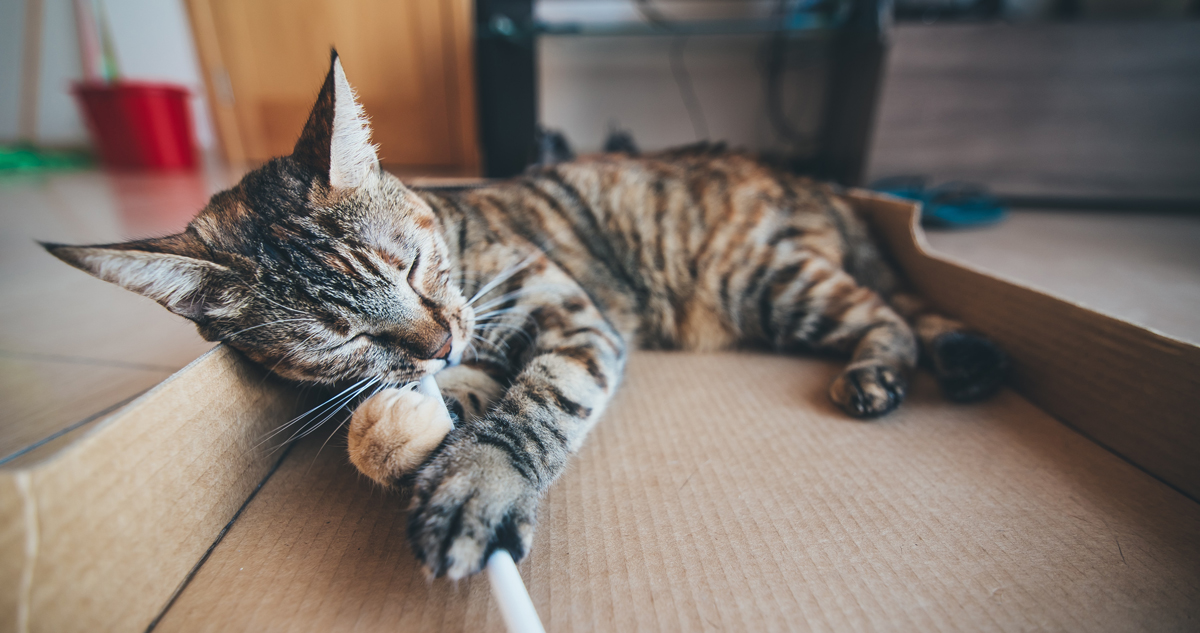
Aggression
However, while the vast majority of bites will either be a warning nibble to stop your petting or the result of an over-excited play session, sometimes bites can have a more serious intent.
Cats can become aggressive for many different reasons. Whether this is directed towards you or another animal it’s important to try to stop your cat biting due to aggression.
If your cat is getting itself into aggressive situations then the likelihood of them suffering harm is increased.
This is more likely to happen if your feline friend is an outdoor cat who gets involved in territorial disputes or if your cat has been previously abused and can get easily scared.
Cats are often injured in fights with other animals causing dangerous abscesses and even fatal illness. Vet bills for four-legged friends can become expensive particularly if you’re not covered by cat insurance.
Some of the most common situations triggering territorial disputes in cats are:
-
A kitten in the household reaches sexual maturity.
-
A new cat is introduced into the family and household.
-
Major changes are made in the cat’s family or environment (for example, moving or someone new moving in).
-
Stray or roaming cats in the neighbourhood enter a cat’s territory.
Sometimes a cat can become aggressive for a reason completely unrelated to you.
This redirected aggression can occur when a cat is agitated by something it can’t get at (perhaps because a window is in the way).
Unable to get to the desired target, the cat turns and lashes out at someone who is nearby – often you!
Warning signs of aggression
A cat’s body language is often more subtle than a dog’s and more difficult to interpret.
Aggression from your cat can be defined as either defensive or offensive aggression. Watching your cat’s body language is an invaluable tool in realising what is happening.
Offensive body language includes:
-
Standing stiff and straight-legged
-
Stiffened rear legs, with the back sloped downward toward the head
-
A stiffened tail held low or straight down to the ground
-
An unwavering stare
-
Upright ears
-
Fur up (often including fur on the tail)
-
Constricted pupils
-
Directly facing target of aggression, possibly moving forward
-
Growling or howling
Defensive body language includes:
-
Crouching
-
Head tucked into body
-
Tail curved around the body and tucked in
-
Eyes wide open with pupils dilated
-
Ears flattened
-
Fur up
-
Whiskers retracted
-
Sideways to the threat, not straight on
-
Hissing or spitting with an open mouth
If your cat is showing any of these postures then try not to touch, attempt to reassure, or punish your cat, it’ll only make matters worse!
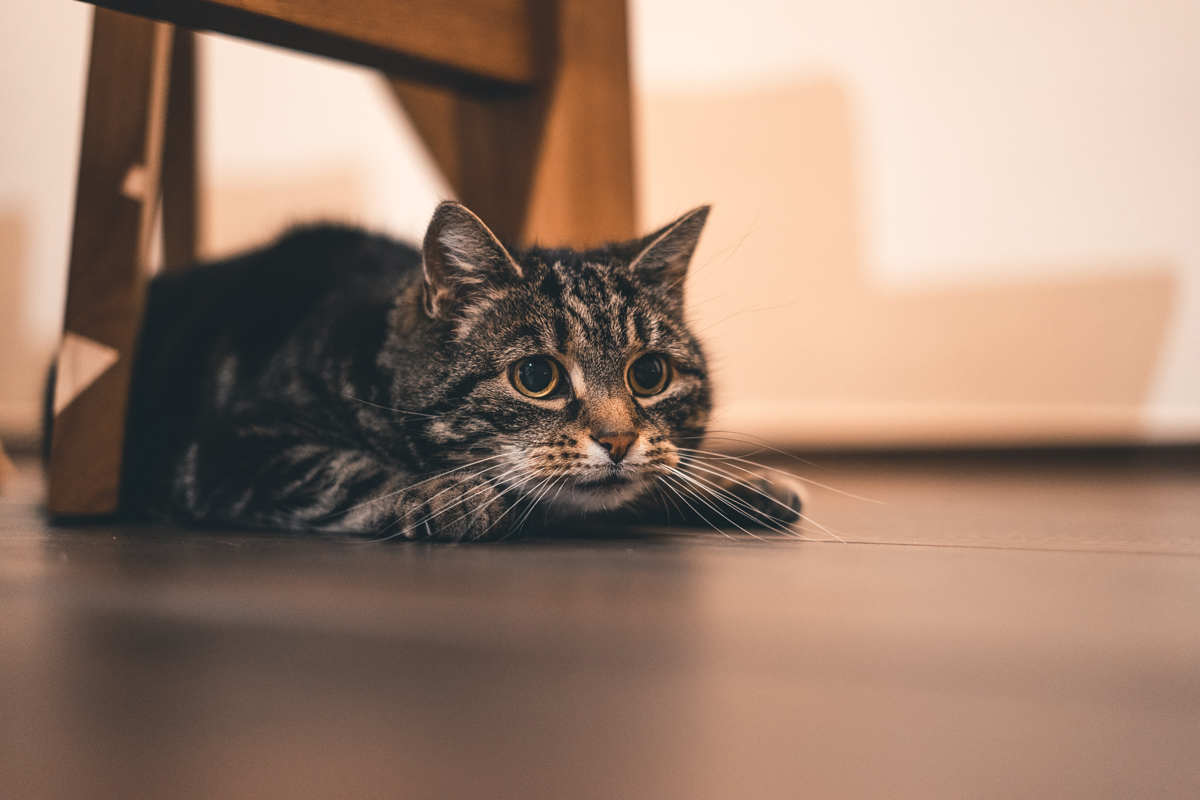
Other possible causes of biting
Cats are creatures of habit so take notice of any new or unusual behaviour.
Aggressive biting and scratching, excessive grooming or even self-mutilation can be a sign your cute companion is ill or in pain.
Unexplained aggressiveness in a previously happy cat could mean they’re wounded in some way or have painful arthritis or dental pain.
It might be something as simple as being bothered by fleas or it could be something more serious.
Cats have been known to suffer from hormone imbalances and even rare neurological disorders such as hyperesthesia.
Having adequate cat insurance means that if you become worried you can contact your vet straight away to get it sorted. Your vet will be able to diagnose and offer treatment to help.
Cat insurance policies arranged through Purely Pets even give you access to a 24-Hour Vet Helpline so you can get answers to your questions quickly, from a veterinary professional.
How to stop your cat biting
There are many techniques you can try to reduce biting depending on the age of cat and reason for the biting. Here are some worth trying:
-
Always be consistent – whatever techniques you try will not work if all those coming into contact with the cat don’t follow them.
-
Avoid using fingers and bare hands – dangling your fingers temptingly above your cat’s head will only end in tears. They need to understand that your hands aren’t toys to be played with.
-
Treat clothing as skin – discourage biting and scratching of your clothes just as you would your skin. Your cat won’t necessarily know when you’re wearing shorts or trousers and will scratch you in either case!
-
Offer an alternative – there are many different types of cat toy on the market to keep your kitty amused for hours. If they expend all their biting and scratching energy on a stuffed mouse, they’ll be less likely to use you as a pin cushion. Make sure that you’ve plenty of different types depending on their mood. Be warned that catnip infused toys might make your cat go even more wild. Perhaps invest in a toy that dispenses treats if you want to add that little bit of extra interest.
-
Praise acceptable behaviour – while cats are by no means as responsive as dogs to praise, they will still appreciate it. If your cat uses ‘soft paws’ or a ‘soft mouth’ when playing then be sure to praise them gently. If the claws come out and they start to bite then withdraw the attention until they calm down.
-
Avoid physical punishment – your cat will not react well to physical punishment. It will make them even more likely to bite or scratch as it’s seeking to protect itself.
Cats can develop a range of behaviour problems, such as aggression, destructiveness, inappropriate toileting, self-mutilation, inappropriate vocal behaviour, nervousness, and phobias.
If you’re worried about any such issues then contact the Purely Pets 24-Hour Vet Helpline for advice or get in contact with a behaviour expert, who’ll advise you on the most appropriate course of action.
It’s important the behaviour expert is someone with the appropriate knowledge, skills and experience to treat your precious cat. Visit the RSPCA website to get recommendations and find out more.
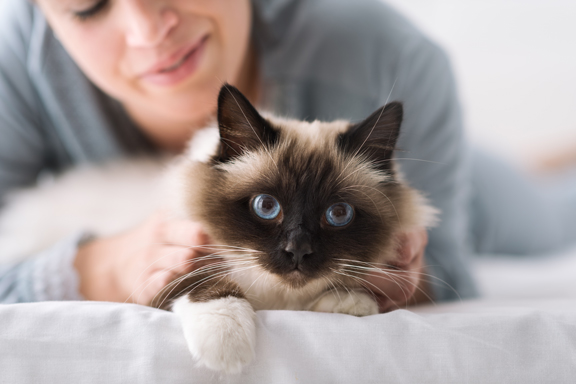
Kittens that bite
Every owner expects their new kitten to bite and pounce – it’s part of their natural behaviour after all.
Kittens will spend many happy hours practising for the day when they’ll be out in the wild hunting for prey – even though for many indoor cats that day will probably never arrive!
Without a mother cat or other kittens to teach them the right and wrong way to use their teeth and claws, it’s usually down to you to explain.
Don’t give your kitten the impression that it’s okay to bite you. Just as with older cats, give them plenty of toys and praise them when they play gently.
The best way to stop a cat from biting is to teach them acceptable behaviour while they’re still young.
Just as with arranging cat insurance for your new family member, providing kittens with an outlet for play and to hone their natural hunting instincts is part and parcel of being a caring cat owner.
What to do if you’re bitten by a cat
As with any other animal bite, the primary risk from a cat bite is infection. Never underestimate the dangers arising from an infected animal bite. The NHS advises that cat bites should be treated in the following way:
-
Wash the bite wound with mild soap, and run warm water over it for a couple of minutes.
-
Gently squeeze the bite to encourage bleeding, if it’s not bleeding already.
-
Remove any objects from the wound, such as teeth, hair or dirt.
-
If the wound is bleeding heavily, put a clean dressing over it and apply pressure.
-
Take painkillers if you're in pain, such as Paracetamol or Ibuprofen if you’re not allergic.
-
Seek professional medical advice.
Get a cat insurance quote with Purely Pets
Despite the occasional issue, cats provide such wonderful companionship it’s important they receive the very best in care.
The first step to achieve this is to get insurance cover to make sure you both have many happy times together.
The team at Purely Pets know this and will work hard to get you cover to suit your budget and your cat’s particular needs.
Whatever the problem, if you’ve taken out award-winning cat insurance arranged through Purely Pets you’ll get cover for vet fees from £1,000 to £15,000 per year. You can even choose an excess level starting from just £60.
Our team of specialists have designed 15 levels of lifetime cover to give you the freedom to decide what’s right for you and your cat.
We also offer a 24-Hour Vet Helpline, so you can get advice, reassurance, or answers for your feline-related questions at any time.
And our online policy management portal gives you greater flexibility in managing your policy at a time to suit you.
Purely Pets can provide you with an online quote for your cat within minutes. We also have a specialist insurance team you can call for a quote or to discuss your options in more detail.
Get a quick quote today.
Helpful Pages
Recent Posts
Pet Insurance Quote
- 98% claims paid *
- Claims paid directly to vets
- 24/7 vet video consultations
- Interest free monthly payments




